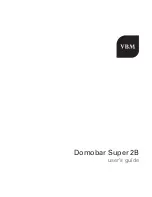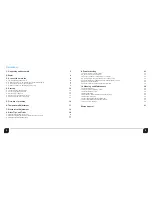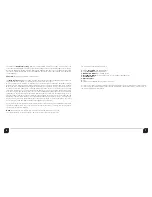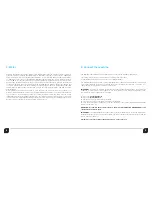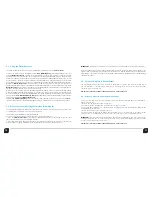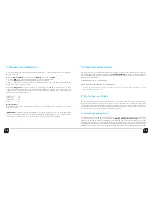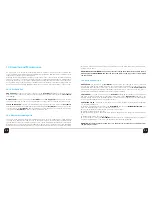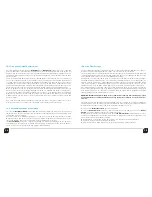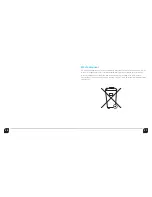
14
15
4.3. Start up: grouphead
The Vibiemme Domobar is manual in its function with only one switch controlled by a lever on the grouphead
itself. The
Manual Control Lever
is on the right side of the E- 61
Grouphead
in its at-rest position. This
is where the lever should be whenever the machine is not brewing espresso.
When the lever is lifted just past the first click stop, the passive pre-infusion begins. This allows a slight flow
of water onto the coffee. This gentle flow of water wets the puck slightly, which helps with extraction and
can also help eliminate channeling (disruption of the coffee causing a fast flow). It is not necessary to use
this position, but leaving it in this mode for about two or three seconds can be useful.
Lifting the
Manual Control Lever
to its full up position closes the 3-way valve and opens the brewing
path. At the same time, the cam to which the lever is attached depresses the switch on the front of the
Vibiemme (just to the right of the E-61 grouphead, behind the cam). This switch activates the pump.
When you choose to end the brewing cycle, return the
Manual Control Lever
to its at-rest, fully down
position. Moving the
Manual Control Lever
to this position turns off the pump and opens the manual
3-way valve which is built into the grouphead.
This is a path from the grouphead down through the lower portion of the casting, and into the drip tray.
When opened, it allows the pressure remaining in the brewing path to flow into the drip tray. This allows
you to immediately remove the
Portafilter
without worrying about the “portafilter sneeze”- a spurt of
coffee or hot water from confined pressure as can happen on lesser machines without a 3-way valve.
4.4. Start up: boiler pressure gauge
On the far left side of the panel is the steam Boiler P
ressure Gauge
(scale 0 to 2.5 bar). This displays the
pressure in the boiler which indirectly supplies you with the water temperature in the boiler. The higher
the pressure, the higher the temperature. While the machine is idling, this gauge will move upwards
when the heating element is on, and will slowly move downwards when the heating element is off.
Generally speaking, a reading of about .9 to 1.1 should be expected. The gauge will fluctuate in a range
of about .15 in normal operation when the machine is idling (on, but not being used). Each division is .05
BAR (.73 psi). The
Heating Element Activity Lamp
to the left of the steam boiler pressure gauge
indicates heating element activity. When the
Heating Element Activity Lamp
is energized the lamp
will be illuminated.
4.5. Start up: brew pressure gauge
The
Brew gauge
on the right side of the display panel (scale 0 to 16 bar) displays the pressure in the
brewing path during an espresso pull. This gives a general indication as to what is happening during the
brewing cycle. The only time when the gauge will display any useful information is when the brewing
process is underway. At all other times, even when the pump is refilling the boiler, this gauge is not
displaying any useful information and should be ignored. About 9 BAR is a good place to be brewing as you
get started. Each division is .5 BAR.
To the left of the brew pressure gauge is the
Low Water Indicator Lamp
. If this is illuminated it means
that the water reservoir needs to be refilled and the machine will not operate until this task has been
completed. If the lamp is off, it indicates that the reservoir has sufficient water to operate.
To the right of the brew pressure gauge is the power indicator. This lamp is illuminated when the machine
is plugged into an electrical outlet and the machine is switched to stage I. The indicator lamps make it easy
to judge the machine’s state at a glance.

